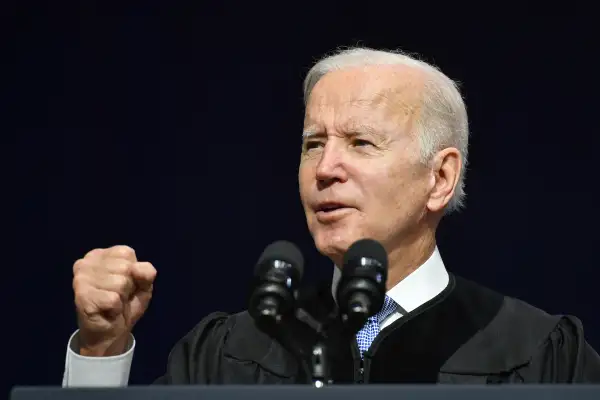Biden Administration Extends Student Loan Pause Amid Omicron Surge

Federal student loan borrowers got a reprieve on Wednesday when the Education Department announced a three-month extension of the freeze on loan payments amid a surge of new COVID-19 cases. Payments had been set to resume in February, though many borrowers had said they weren't ready to resume paying after a nearly two-year pause.
The current forbearance period, which includes paused payments and waived student loan interest, will now remain in effect through May 1. Collections activities for most federal student loan borrowers in default will also be suspended during this time.
"This additional extension of the repayment pause will provide critical relief to borrowers who continue to face financial hardships as a result of the pandemic, and will allow our administration to assess the impacts of omicron on student borrowers," Secretary of Education Miguel Cardona said in announcing the news.
The pandemic-era relief, which started in March 2020, has been extended multiple times before, during both the Trump and Biden administrations.
But this week's announcement marks a significant shift in what the Biden administration had been planning. In August, when the Education Department announced an extension through Jan. 31, 2022, officials called it a “final extension” and said they were giving a “definitive end date” to the forbearance period to help borrowers plan.
In the months since, the Education Department had begun reaching out to borrowers to notify them of the end of the relief period, while student loan servicers had hired more staffers to try to set up a smooth transition back into repayment. And earlier this month, Press Secretary Jen Psaki said the White House was still planning for payments to resume come February.
But even before the omnicron surge, some Democratic lawmakers and borrower advocates had begun rounding up support for another extension of the payment freeze. Sens. Chuck Schumer and Elizabeth Warren, who’ve been among the most vocal in calling for student loan relief, including widespread loan forgiveness, urged the president to delay the return of payments in a Dec. 8 letter.
Several other Democratic senators said that the administration should at the very least extend the interest waiver until the end of the COVID-19 national emergency. The Education Department has reported that the interest waiver alone was saving borrowers $5 billion a month.
Consumer groups and advocates, meanwhile, said in a separate letter that payments shouldn’t resume until the “administration has fully delivered on the promises (it) made to student loan borrowers to fix the broken student loan system and cancel federal student debt.”
Borrowers, the groups have argued, are already dealing with enough economic stress given the rising cost of consumer goods and the upcoming end of monthly child tax credit payments.
Some 43 million Americans have federal student loans, and the vast majority of them have benefitted from the payment freeze and interest waiver. A survey from Pew Charitable Trusts earlier this year found 59% borrowers who had not been making voluntary payments during the forbearance period said they were instead using the money for “needed expenses,” including rent, food or utilities.
But recent borrower surveys have reported varied levels of preparation for payments to resume. One from Ally bank found that four out of 10 borrowers were not confident they’d be able to make their payments when the forbearance ended. (About the same amount said they were confident they'd be able to afford payments.) Another new poll from Data for Progress found that 70% of respondents either “strongly supported” or “somewhat supported” extending the payment pause.
More from Money:
Student Loan Scams Are on the Rise Amid Confusion Over Debt Relief. Here's What to Watch for
How 2 Years Without Student Loan Bills Changed the Game for America's Borrowers
